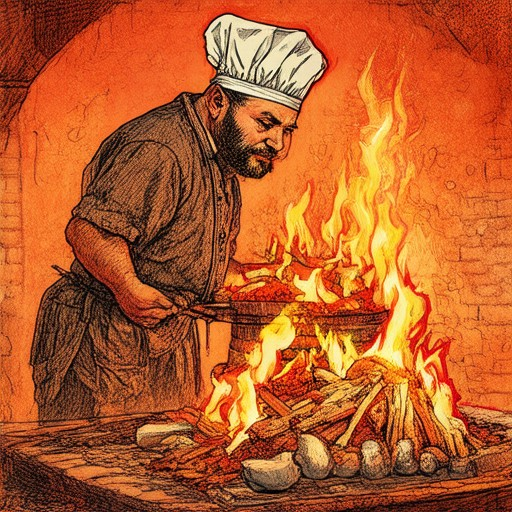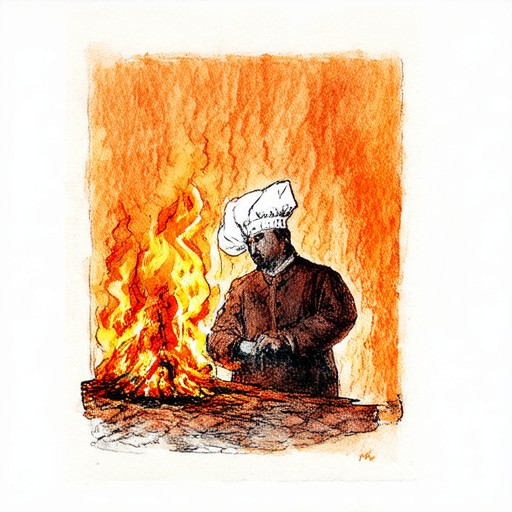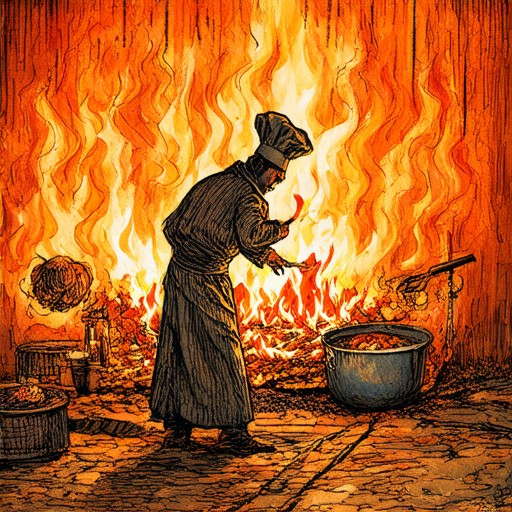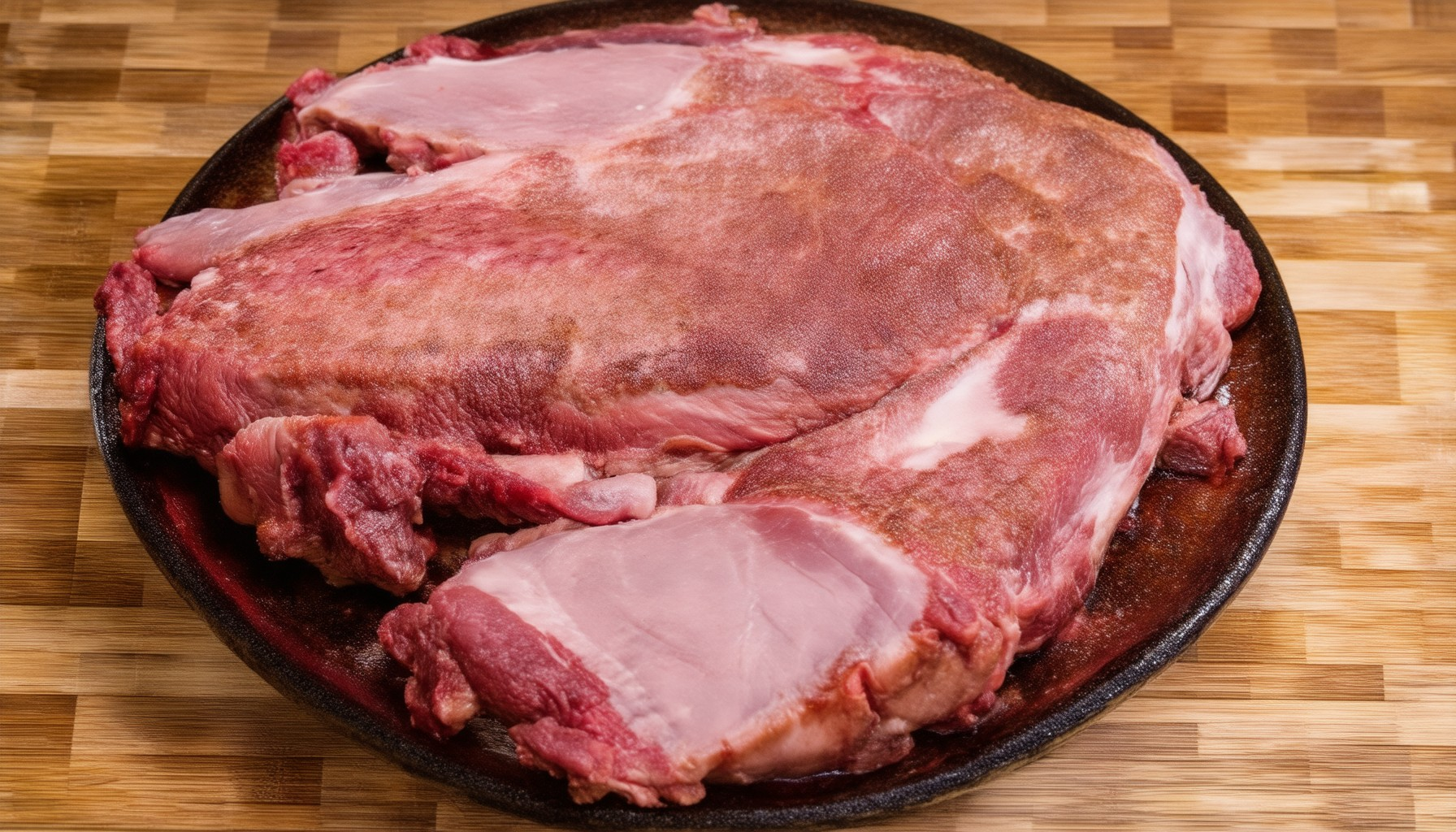Are you struggling to master the art of cooking meat? Whether you’re working with chicken, beef, pork, or fish, achieving that perfect medium-rare steak, tender braised beef, or juicy grilled chicken can feel like an uphill battle. From the stovetop to the grill, cooking meat requires precision, patience, and the right techniques to ensure your dishes are flavorful, moist, and visually appealing. In this guide, we’ll walk you through the essential tips and tricks for cooking meat like a pro, covering everything from the basics of preparation to advanced methods for achieving that coveted restaurant-quality finish. With these expert insights, you’ll be able to transform even the toughest cuts into mouthwatering meals, impress your guests, and elevate your cooking game once and for all.

What are the 5 basic rules of cooking meat?
Here are the five essential rules for cooking meat effectively:
- Control the Temperature : Maintain a consistent internal temperature when grilling, roasting, or frying meat. Use a meat thermometer to check the doneness of meats like chicken, steak, and pork. For example, poultry should reach 165°F (74°C), while beef and lamb should be around 145°F (63°C).
- Use the Right Tools : Invest in a good meat thermometer and sharp knives to ensure precise cooking. Proper tools make the process easier and help in achieving the best results.
- Season Early and Often : Marinate meats with herbs, spices, and sauces to enhance flavor. Season early to allow the ingredients to meld with the meat before cooking begins.
- Handle Meat Gently : Avoid pressing, poking, or prodding meat too much during cooking. This can cause it to dry out or fall apart.
- Let It Rest : After cooking, let meat rest for about 10 minutes before slicing. This allows juices to redistribute, ensuring tender and juicy results.
For more tips, check out our guides on seasoning and cooking temperatures .
How to Perfectly Cook Meat
Cooking meat perfectly requires attention to detail and understanding of techniques that bring out the best flavor and texture. Here’s a comprehensive guide to help you achieve this:
- Choose the Right Cut of Meat
- Select cuts suited for your recipe, such as sirloin, ribeye, or chicken breasts, based on cooking time and desired texture.
- Look for marbling in meats like steak for added flavor and juiciness.
- Preparation is Key
- Pat meats dry with paper towels to create a caramelized crust.
- Season generously with salt and pepper, or try herbs and spices for added flavor.
- Let meats come to room temperature for even cooking and better texture.
- Cooking Methods
- Grilling: Preheat grill to the recommended temperature (usually around 400°F for steaks), cook meats for approximately 4-5 minutes per side, adjusting for thickness.
- Sautéing: Heat oil in a pan over medium-high heat, cook meats for 3-4 minutes per side until browned and reach desired internal temperature.
- Roasting: Place meats on a baking sheet or roasting pan, bake at high temperatures (400-450°F) until internally cooked to desired doneness, about 15-25 minutes depending on size.
- Frying: Use a skillet or deep pan, cook meats in oil until golden brown and cooked through, typically 3-4 minutes per side.
- Internal Temperature Guide
- Beef: 125°F for rare, 135°F for medium-rare, 145°F for medium, and 160°F for well-done.
- Pork: 145°F for medium-rare, 155°F for medium, and 165°F for well-done.
- Chicken: 165°F for well-done, though 150°F is acceptable for some preferences.
- Resting Meat
- Allow meats to rest for at least 10 minutes after cooking to redistribute juices and ensure tender texture.
- Wrap in foil or place on a clean surface to trap moisture.
- Flavor Enhancement
- Add finishing touches like butter, herbs, or glazes during cooking or after resting.
- Experiment with compound butters or marinades for unique flavor profiles.
- Tools and Techniques
- Use a meat thermometer for precise doneness.
- Invest in quality knives and tools for consistent results.
- Consider sous-vacuum packaging for ultra-tender meats.
- Practice and Adjust
- Keep a journal of your cooking experiments to track success and adjustments.
- Stay patient and observant, refining your technique with each attempt.
By following these steps, you’ll master the art of cooking meat to perfection, ensuring flavorful and tender results every time. Remember, cooking is about experimentation and enjoyment!

What is the Best Method of Cooking Meat?
The optimal method of cooking meat depends on several factors, including the type of meat, its cut, and the desired outcome. Below are some of the most effective approaches to ensure flavorful and evenly cooked meat:
Moist-Heat Methods
Moist-heat cooking is ideal for tougher cuts of meat, as it helps break down connective tissues and renders fat, resulting in tender and juicy results. Popular methods include:
- Braising: Slow-cooked in a liquid, such as broth or wine, allowing the meat to simmer until tender.
- Boiling: Suitable for meats like beef, pork, or chicken, producing tender-textured dishes.
- Poaching: Cooking in liquid at a low simmer, perfect for delicate meats like fish or veal.
- Steaming: A healthy option for meats like salmon or chicken, preserving nutrients and juices.
- Stewing: Similar to braising, often used for tougher cuts like chuck steak or brisket.
Dry-Heat Methods
For leaner meats and those with less fat, dry-heat methods are preferred, as they sear the surface and cook quickly:
- Grilling: Ideal for meats like burgers, hot dogs, and ribeye, achieving char marks for added flavor.
- Pan-Frying: Quick cooking method for meats like chicken breasts or steaks, creating crispy exteriors.
- Roasting: Perfect for meats like turkey or prime rib, yielding juicy interiors and caramelized surfaces.
- Skillet Cooking: A versatile method for meats like pancakes, eggs, or chops, requiring minimal ingredients.
Tips for Success
- Choose the Right Cut: Selecting the appropriate cut of meat ensures the cooking method works well. Tougher cuts benefit from moist-heat, while leaner cuts excel with dry-heat.
- Season Wisely: Enhance flavors with herbs, spices, and marinades, tailoring to the meat’s natural qualities.
- Control the Heat: Proper temperature control is crucial. Use a meat thermometer to ensure internal temperatures reach safe eating levels without overcooking.
By understanding these methods and applying them thoughtfully, you can transform even the toughest cuts into delicious, flavorful meals. Explore more techniques and recipes on our website for inspiration. Link to memories-restaurant.com .

How to Cook Meat So It Is Tender
To achieve tender meat, consider the following methods and techniques:
Tenderizing Techniques
- Use a Meat Mallet or Tenderizing Tool: Pounding the meat breaks down tough muscle fibers, making it more tender.
- Marinate with Acidic Ingredients: Marinate meat in acidic solutions like vinegar, lemon juice, or yogurt to soften the proteins.
Cooking Methods
- Slow Cooking: Simmer meat in liquid (broth, beer, or wine) in a covered pot until it becomes tender. Ideal for tougher cuts like chuck steak.
- Sous-Vide Cooking: Cook meat at a low, constant temperature (usually around 145°F for beef) to dissolve connective tissues without overcooking.
- Grilling with Indirect Heat: Grill meats over indirect heat, using a water bath or foil wrapping to retain moisture and prevent drying out.
Cooking Temperature and Timing
- Internal Temperature Guide: Aim for an internal temperature of 120-130°F for tender meat. Use a meat thermometer for accuracy.
- Remove Meat When Necessary: Don’t overcook! Meat becomes tough once it reaches the desired tenderness.
Additional Tips
- Slice Correctly: Cut meat along the grain for thin slices that remain tender.
- Let It Rest: Allow cooked meat to rest before slicing to retain juices and ensure tender texture.
For more culinary insights and recipe ideas, visit our Memories Restaurant website.
Tenderizing Meat: The Secret Revealed
The secret to achieving tender, juicy meat lies in understanding the right techniques and ingredients to soften tough cuts. One effective method involves using baking soda, a simple yet powerful tool for transforming less expensive cuts into flavorful dishes.
Ingredients for Baking Soda Tenderization
- Baking Soda: A versatile ingredient that helps break down muscle fibers in meat, making it more tender.
- Water: Use enough liquid to cover the meat during the marinating process for optimal absorption.
- Time: Allow the baking soda to work its magic by marinating the meat for at least 24 hours, preferably longer for tougher cuts like chuck steak.
Steps to Achieve Tender Meat
- Select the Right Cut: Choose a tough cut like chuck steak, brisket, or pork shoulder, which benefit most from tenderizing techniques.
- Mix the Baking Soda Solution: Dissolve baking soda in water and apply it directly to the meat, massaging it thoroughly to ensure even distribution.
- Marinate Properly: Let the meat sit in the solution for at least 24 hours, allowing the baking soda to penetrate and soften the texture.
- Cook Carefully: Once marinated, cook the meat using a slow cooking method like braising or roasting to lock in moisture and enhance flavor.
Alternative Methods for Tenderizing
- Pound It Out: Using a meat mallet or rolling pin to break down muscle fibers can yield tender results.
- Brining: Soak meats in a saltwater solution to draw out excess moisture and improve texture.
- Cornstarch Slurry: Create a paste with cornstarch and oil to coat meats, helping to tenderize and prevent them from drying out during cooking.
Why Baking Soda Works
Baking soda acts as a natural tenderizer by breaking down the protein structures in meat. Its alkaline properties neutralize the acidity in the meat, making the fibers more accessible and easier to digest, resulting in a softer texture.
Arm & Hammer Baking Soda
For best results, we recommend using Arm & Hammer Baking Soda , a trusted name in household cleaning and tenderization. Its high-quality formula ensures consistent results every time you prepare your meals.
Mastering the Art of Cooking Meat
Tenderizing meat is just the beginning. To truly elevate your dishes, pair tenderized meats with bold seasonings and cooking techniques like slow cooking or smoking. This combination ensures a mouthwatering experience every time.

How to Keep Meat Juicy When Cooking
Keeping meat juicy requires attention to several factors during the cooking process. Here are some effective strategies:
1. Brining
Brining is an excellent method to enhance moisture retention. Submerge the meat in a saltwater solution (approximately 1 cup of salt for each gallon of water) for at least 30 minutes before cooking. This helps draw out excess moisture and keeps the meat tender.
2. Covering Meat While Cooking
When grilling, roasting, or pan-frying, always cover the meat with a lid or aluminum foil to trap steam and prevent it from drying out. This ensures that juices remain locked in and the meat stays moist.
3. Lower Cooking Temperature
Cooking meat at a lower temperature than the recommended internal temperature (typically around 165°F for poultry and 145°F for red meats) can help retain moisture. Use a thermometer to monitor the temperature and remove meat when it reaches the safe eating temperature rather than waiting until it’s well-done.
4. Use Broth or Fat
Add a splash of broth or fat (like butter or olive oil) to the cooking surface. This creates a moister environment, preventing the meat from drying out. Baste the meat periodically with the liquid to keep it from becoming too dry.
5. Allow Meat to Rest After Cooking
Let the meat rest for at least 10 minutes after cooking. This allows juices to redistribute throughout the meat, ensuring it remains tender and juicy. Cutting it immediately after cooking can result in dry texture.
6. Choose the Right Cookware
Use heavy-duty pots or pans with lids to seal in moisture. Non-stick pans are also ideal as they prevent sticking and allow for even cooking, which helps maintain juiciness.
7. Braising
Braising involves cooking meat in a liquid (like broth or wine) over low heat for an extended period. This method is excellent for tougher cuts of meat and helps keep them tender and juicy.
8. Slow Cooking
Using a slow cooker can yield incredibly tender and juicy results, especially for tougher meats like chuck roast. Set the slow cooker on low heat and let it cook for several hours, adding liquid as needed to keep the meat moist.
Conclusion
By incorporating these techniques, you can ensure your meat stays juicy and flavorful. Remember to brine, cover during cooking, use lower temperatures, and allow the meat to rest after cooking. These methods work together to lock in moisture and preserve the meat’s tenderness.





0 Comments